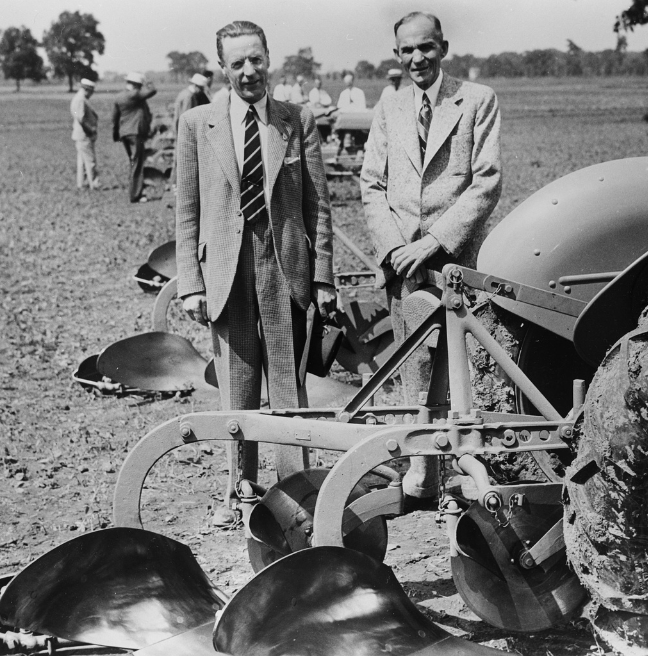
the life and legacy of harry ferguson
Explore the life and worldwide impact of Innovator Harry Ferguson with John Barron, Director of Friends of Ferguson Heritage.
Humble Beginnings
Harry Ferguson was born into a 100-acre farm of mixed quality on November 4, 1884, near Dromore in Northern Ireland.

When Harry left school in 1899, he went to work full time on the farm, during which time he came to detest farm work. He developed a particular disdain for the drudgery attached to the use of horses for farm work. His slight physical build was unsuitable for manual labour and his resentment of the work was amplified by his rebellious nature and enquiring mind.
Historical Coincidences
Around the turn of the century traction power was almost exclusively provided by farm animals, and agricultural practices had changed very little for the previous 100 years.

Fortuitously for Harry, there was a tremendous industrial growth spurt occurring in Ulster, with Belfast becoming the largest linen and shipbuilding city in the world with a consequent growth in popularity and affordability of motorised vehicles. In 1902 he was offered an apprenticeship by his brother Joe who had set up a car and cycle repair shop at 41 Shankill Rd, Belfast. Harry set about learning his trade with great enthusiasm and vigour and his gift for all things mechanical soon became evident.
Marketing Genius
In addition to his technical ability, he showed a remarkable flair for what in modern parlance is termed marketing and this combined with a brilliant ability to sell, remained a constant throughout his career. These abilities initially led him into the highly dangerous sport of motorbike racing as a method of promoting his brother’s business as early as 1904, but by 1908 he became fascinated by the even more dangerous activity of flying aeroplane.

As a result of these activities, Harry accumulated exceptional brand recognition and success for his brother’s company. However, by 1911, with the help of others he had built enough customer recognition and resources to start his own company. With his combined gifts and growth in the marketplace for motorised vehicles, his company prospered enabling him to garner a large part of the emerging car market.
Return to Agriculture
During World War I British agriculture was finding it impossible to increase or even maintain agricultural output. Both men and horses were needed to sustain the war effort and even though previously farmers viewed tractors as distasteful, now they began to accept the necessity for mechanisation and the importation of tractors from North America began.
Harry Ferguson died on 25 October 1960 but his inventions and influence live on, with his hydraulic draft control system having changed the face of agriculture on a global scale.
Explore Harry Ferguson's different ventures below.
EXPLORE MORE
Harry Ferguson & Agriculture: The Early Days
Find out how Harry Ferguson entered the world of agriculture with John Barron, Director of Friends of Ferguson Heritage.
Harry Ferguson & Agriculture: The Later Years
Return to Harry Ferguson's world of agriculture with John Barron, Director of Friends of Ferguson Heritage.
Harry Ferguson & Aviation
Harry Ferguson is famous for his pioneering innovations in the world of agriculture, but his earliest achievements were in aviation.


